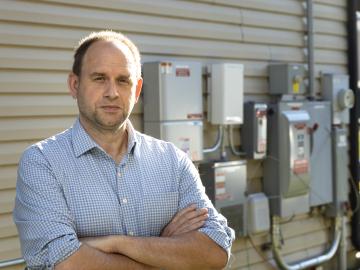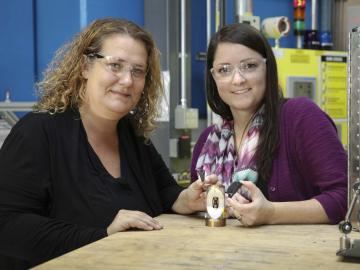
Filter News
Area of Research
- (-) Energy Science (79)
- (-) National Security (14)
- Advanced Manufacturing (1)
- Biology and Environment (26)
- Computational Biology (1)
- Computational Engineering (2)
- Computer Science (3)
- Fusion and Fission (17)
- Fusion Energy (9)
- Isotopes (6)
- Materials (45)
- Materials for Computing (10)
- Neutron Science (71)
- Nuclear Science and Technology (8)
- Sensors and Controls (1)
- Supercomputing (29)
- Transportation Systems (2)
News Type
News Topics
- (-) Big Data (5)
- (-) Biomedical (5)
- (-) Coronavirus (11)
- (-) Fusion (2)
- (-) Neutron Science (10)
- (-) Security (11)
- (-) Transportation (55)
- 3-D Printing/Advanced Manufacturing (64)
- Advanced Reactors (4)
- Artificial Intelligence (12)
- Bioenergy (19)
- Biology (9)
- Biotechnology (3)
- Buildings (27)
- Chemical Sciences (11)
- Clean Water (6)
- Composites (14)
- Computer Science (29)
- Critical Materials (9)
- Cybersecurity (17)
- Energy Storage (57)
- Environment (36)
- Exascale Computing (2)
- Fossil Energy (1)
- Frontier (1)
- Grid (31)
- High-Performance Computing (4)
- Hydropower (2)
- Isotopes (1)
- Machine Learning (11)
- Materials (31)
- Materials Science (22)
- Mathematics (2)
- Mercury (3)
- Microscopy (7)
- Molten Salt (1)
- Nanotechnology (6)
- National Security (23)
- Nuclear Energy (7)
- Partnerships (11)
- Physics (2)
- Polymers (10)
- Quantum Science (2)
- Simulation (2)
- Space Exploration (2)
- Statistics (1)
- Summit (4)
Media Contacts

Oak Ridge National Laboratory researchers have developed a machine learning model that could help predict the impact pandemics such as COVID-19 have on fuel demand in the United States.

Joe Hagerman, ORNL research lead for buildings integration and controls, understands the impact building technology innovations can have during times of crisis. Over a decade ago, he found himself in the middle of one of the most devastating natural disasters of the century, Hurricane Katrina.

Five researchers at the Department of Energy’s Oak Ridge National Laboratory have been named ORNL Corporate Fellows in recognition of significant career accomplishments and continued leadership in their scientific fields.

Scientists at ORNL used neutron scattering and supercomputing to better understand how an organic solvent and water work together to break down plant biomass, creating a pathway to significantly improve the production of renewable

Ada Sedova’s journey to Oak Ridge National Laboratory has taken her on the path from pre-med studies in college to an accelerated graduate career in mathematics and biophysics and now to the intersection of computational science and biology

Oak Ridge National Laboratory has licensed a novel method to 3D print components used in neutron instruments for scientific research to the ExOne Company, a leading maker of binder jet 3D printing technology.

Oak Ridge National Laboratory researchers have developed a thin film, highly conductive solid-state electrolyte made of a polymer and ceramic-based composite for lithium metal batteries.

Oak Ridge National Laboratory’s high-resolution population distribution database, LandScan USA, became permanently available to researchers in time to aid the response to the novel coronavirus pandemic.

Researchers at Oak Ridge National Laboratory demonstrated a 20-kilowatt bi-directional wireless charging system on a UPS plug-in hybrid electric delivery truck, advancing the technology to a larger class of vehicles and enabling a new energy storage method for fleet owners and their facilities.

A novel approach developed by scientists at ORNL can scan massive datasets of large-scale satellite images to more accurately map infrastructure – such as buildings and roads – in hours versus days.


